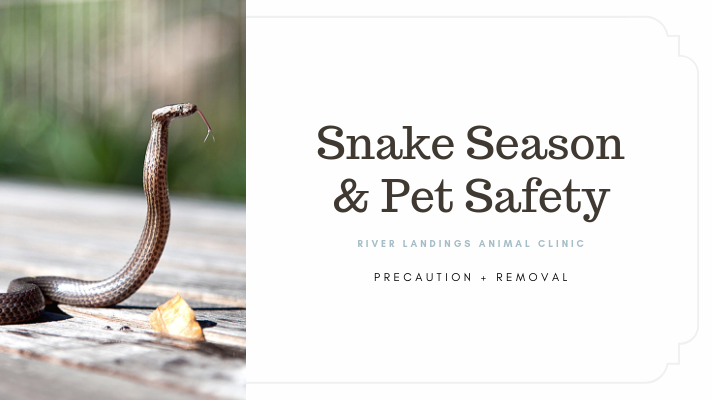With summer in full swing, snake bites are on the rise—but understanding the reptiles’ behavior can help people and pets stay safe.
Cases of snake bites in emergency rooms are on the rise, and it will only become more prevalent as the season progresses. Snakes’ seasonal behavior is down to physiology. Like other reptiles, snakes depend on their environment to regulate their body temperature.
In the spring and fall, snakes are most active during the heat of the day. In the heat of the summer, however, they are going to be active during twilight and overnight hours, but will seek out shade and water to cool off during the daytime. Because of this, there is no time that is off limits to when your pet may encounter a snake. Weather is just one piece of the equation. With more free time and time spent outdoors in the summer, there are more opportunities for interactions.
While not all snakes are venomous, even nonvenomous snakes can bite when provoked.
Err on the side of caution. When we see a snake, we tend to be distracted or find difficulty in identifying the animal. It’s better to be safe than sorry. To minimize the chances of a snake encounter, it is important to understand what attracts snakes in the first place and what motivates them to bite.
Identifying snakes in Florida
There are several resources for identifying the common and uncommon snakes of Florida.
What attracts snakes?
Anywhere that has ample food (small rodents, birds, bugs, other reptiles), shade, and places to hide are likely going to have snakes. They try very hard to stay away from us, and only bite when they feel threatened.
Keeping Pets Safe From Snakes
When it comes to pets, the issue is that dogs and even cats tend to be curious about snakes—from cats swatting at a snake to dogs putting their faces a little too close— all of which can lead to a bite. Consistent precautions can help keep pets out of harm’s way.
Turn on flood lights, make some noise, and supervise your pets when they are let outside in the yard (especially at night). When taking your pets for a walk on a leash, keep them away from shrubbery, landscaping timbers, and vehicles parked on grass.
We do not suggest the aid of snake repellents, but rather make ones’ property less hospitable to snakes by clearing shrubs, brush, leaves, as well as removing hiding spots like wood piles or cars that have been sitting awhile.
When You Are Face to Face with a Snake
Snakes play a larger role in our ecosystem. Realize that they are not looking for a fight with humans. Without snakes, we would have an abundance of small rodents and other pests. Do not kill the snake!
Snake bites occur when people fail to keep their distance. Rather than approaching or attacking a snake, contact animal control for assistance. Animal control officers can safely capture and contain a snake before moving it to a safe habitat away from humans.
So what can YOU do? Simply keep an eye on the snake, so that you are able to help animal control locate the animal.
Did you know even a dead snake could present a threat? Although not common, it is still possible for some snakes to deliver their venom even after they have died. If you believe the snake to be dead, leave it alone for an hour and then use a tool like a shovel or a broom handle for removal.
Removal Resources
Bradenton Wildlife Control:
Sarasota Wildlife Control and Nuisance Wildlife Removal:
Manatee County Animal Services:
Hear From Us Again
Don't forget to subscribe to our email newsletter for more recipes, articles, and clinic updates delivered to your inbox (here). Or, you can keep up to date by liking and following our Facebook page (here).
Related: We have more information under our cat health + dog health + client care categories.


